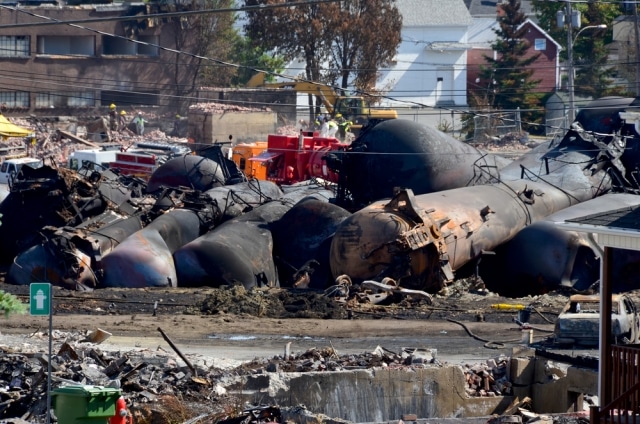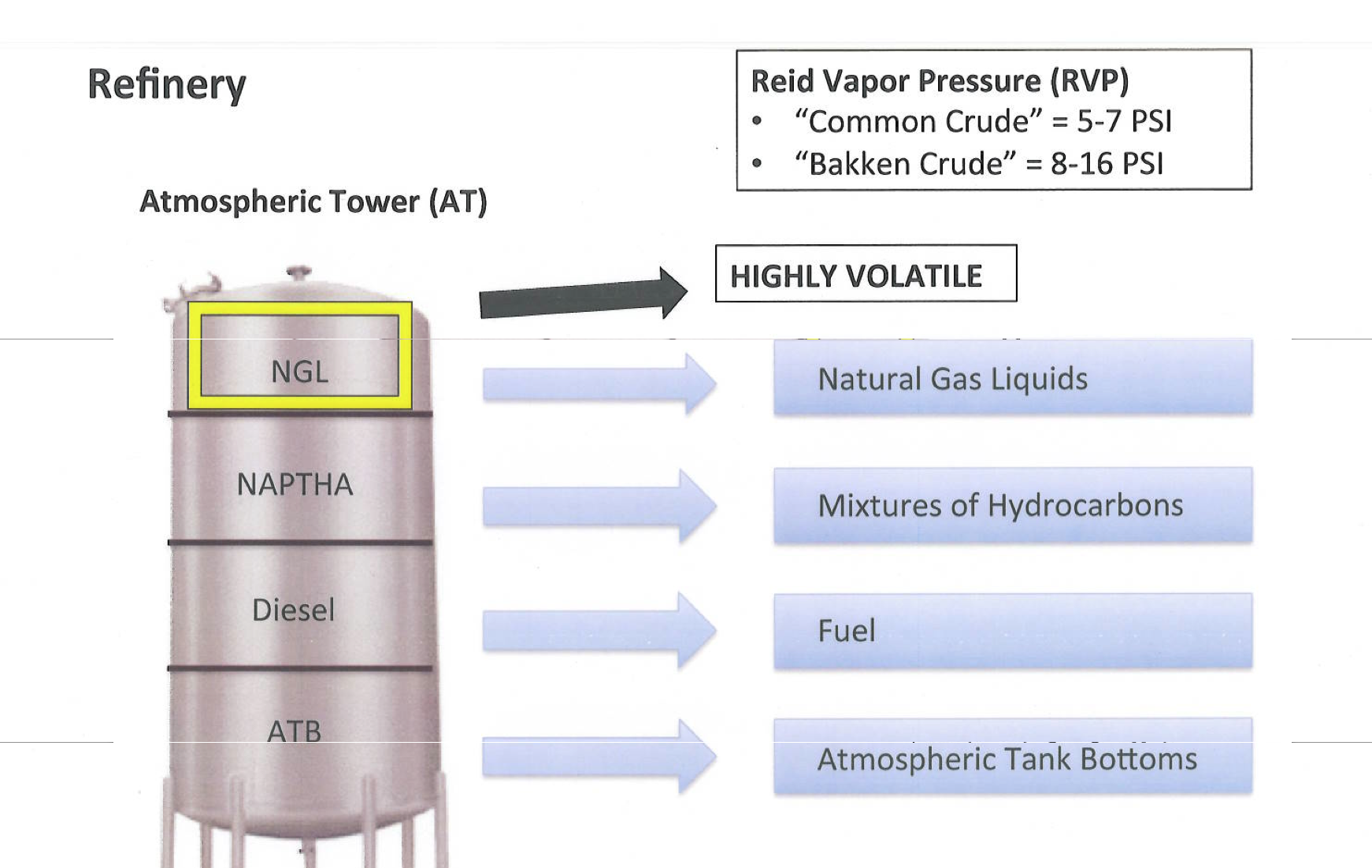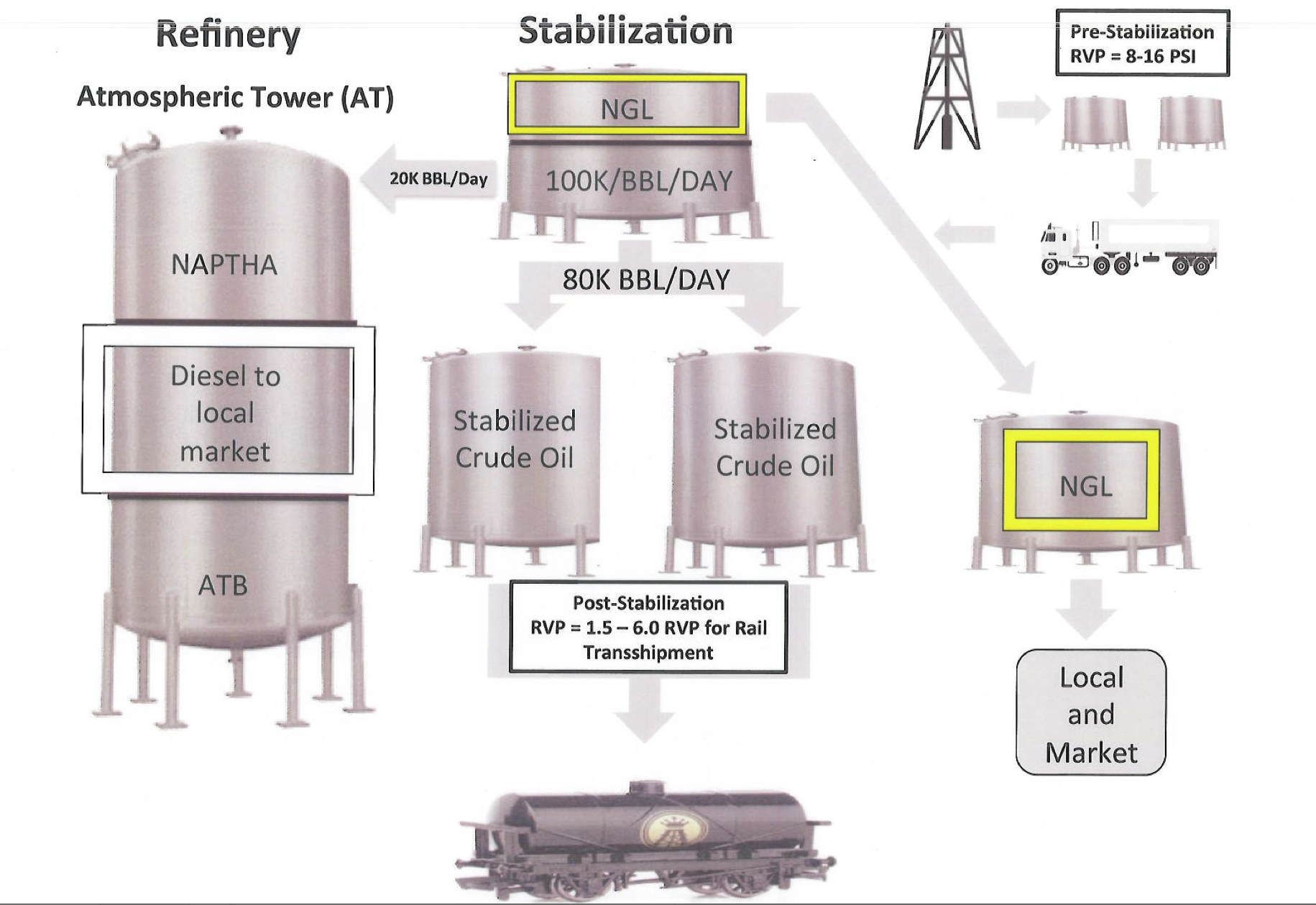On the same day that the Obama administration released long-awaited new safety regulations for the oil-by-rail industry, the Pipeline and Hazardous Materials Safety Administration (PHMSA) released another report with their testing results for Bakken crude oil. The conclusion reached by PHMSA is that Bakken crude oil “is more volatile than most other types of crude.”
These results don’t come as a surprise since the five oil trains that have crashed and exploded in the last year all were carrying Bakken crude.
Of course, the new regulations released imultaneously do not require the oil industry to do the one thing that would eliminate this problem: oil stabilization. A well known and proven method for removing the natural gas liquids from crude oil that makes the oil “stable” and non-explosive.
While the new regulations do not offer any proposals to require the oil industry to remove the volatile components of Bakken crude, on page 144 of the proposal they do acknowledge that this is possible. They request comments on the following question:
Is the current exception for combustible liquids sufficient to incentivize producers to reduce the volatility of crude oil for continued use of existing tank cars?
Essentially they are acknowledging that if the industry stabilized the oil it wouldn’t be explosive and thus they would be able to continue to use the existing DOT-111 rail cars to transport it. Just like those tank cars will be able to transport Alberta tar sands oil because it is not explosive.
The week before the release of the new regulations, the American Petroleum Institute and the American Association of Railroads released a joint statement stating that they were in agreement on two things that shouldn’t be part of the finalized new regulations — lower train speeds and mandatory stabilization. And while the proposed regulations do offer some requirements for lower trains speeds, they include nothing about mandatory stabilization.
In May, Myron Goforth, the president of Dew Point Control LLC, a manufacturer of stabilization equipment put the situation in simple terms for Reuters.
“It’s very easy to stabilize the crude – it just takes money,” Goforth said. “The producer doesn’t want to pay for it if he can ship it without doing it.”
So without regulations to require the stabilization of Bakken crude, the public will be put at risk so that the oil companies can make higher profits. And with the new proposed regulations, the regulators have made it clear they will not stand in the way of Big Oil to keep the people safe.
The good news for the public is that Big Oil’s greed might actually lead to them having to stabilize Bakken crude.
There is currently a major lobbying effort by the oil industry to lift the ban on exporting American crude oil. And in order to ship the oil to other countries, the oil companies may be required to stabilize the Bakken crude. One industry analyst recently commented to Platts on what would happen if stabilization was required for export.
“You could stabilize and go. You’d still have to put it into rail cars and ship it to the coast, but at least you’d be selling it at a global market price instead of at the WTI discount. Who wouldn’t do that? Everybody would do it.”
It isn’t like the regulators weren’t aware of this possibility before they put out the new proposed regulations for oil by rail. In the many private meetings held at the Office of Information and Regulatory Affairs (OIRA) prior to the release of the regulations, one company stood out from the oil and rail companies making up the majority of the meetings: Quantum Energy Ltd.
On June 2nd Quantum Energy met with OIRA and presented a simple three-page presentation. The presentation explains how regular crude oil has a Reid Vapor Pressure (RVP) of 5-7 psi and Bakken crude has an RVP between 8-16 psi. To put that in perspective, gasoline typically has a RVP of 9 psi.
Higher RVP correlates to higher volatility and explosiveness.
The last slide in the Quantum presentation shows that “post stabilization” Bakken crude would have a RVP of 1.5 – 6 psi.
So why was an energy company arguing the case for stabilization to OIRA prior to the new regulations? Because they are in the stabilization business and they are getting ready for the export ban to be lifted.
Russell Smith, executive vice president for Quantum, explained their position to Platt’s prior to the release of the new regulations.
“We’re not advocating if they do or if they don’t [require stabilization]. Quite frankly, we don’t care. Our business plan is centered around exportability.”
It appears that the safety of the people located within the blast zones of the bomb trains will not ultimately be addressed by regulators until the oil can be shipped to other countries, at which point they will require the oil to be stabilized to reduce the risk of explosions.
As the analyst said, “Who wouldn’t do that? Everybody would do it.”
Image credit: Lac-Megantic deadly oil-by-rail disaster, via Shutterstock.
Subscribe to our newsletter
Stay up to date with DeSmog news and alerts








